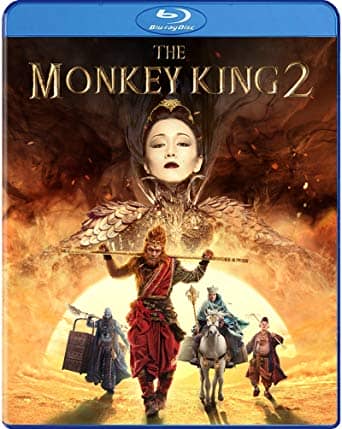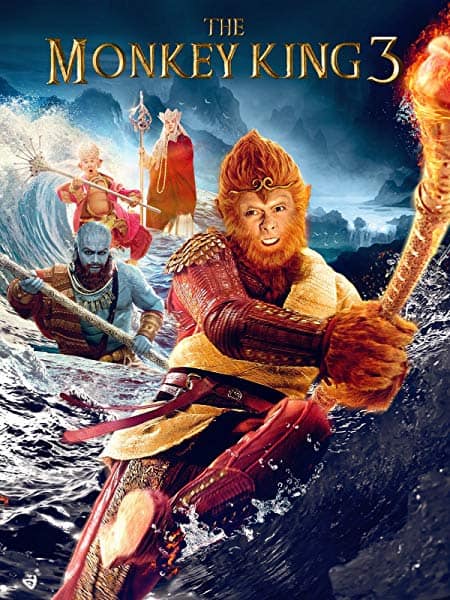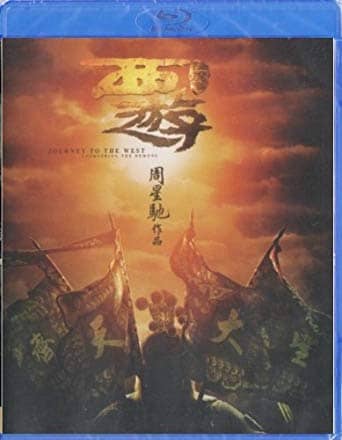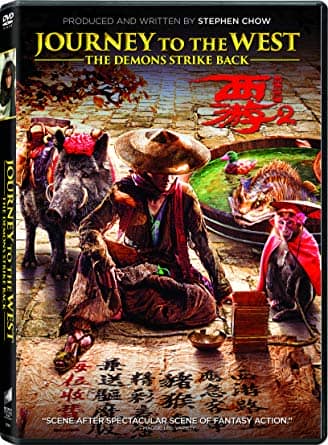During the Jin Dynasty, which we know today as parts of China, Mongolia, North Korea, and Vietnam, writers began creating stories related to gods and mythical creatures. The Jin Dynasty began during the Third Century and these stories continued to be written and told as time went on. Today, these writings, stories, and poems are known as Chinese Mythology.
The book The Classic of Mountains and Seas contains the largest collection of Chinese myths with 204 total mythical creatures, gods, and heroes told in the short stories all throughout the book. The book includes stories about Nüwa, the mother goddess, and other prominent deities and heroes. While this is the largest collection of short stories of Chinese myths, there are many lengthy myths that have been turned into movies, and we are going to list the best ones below.
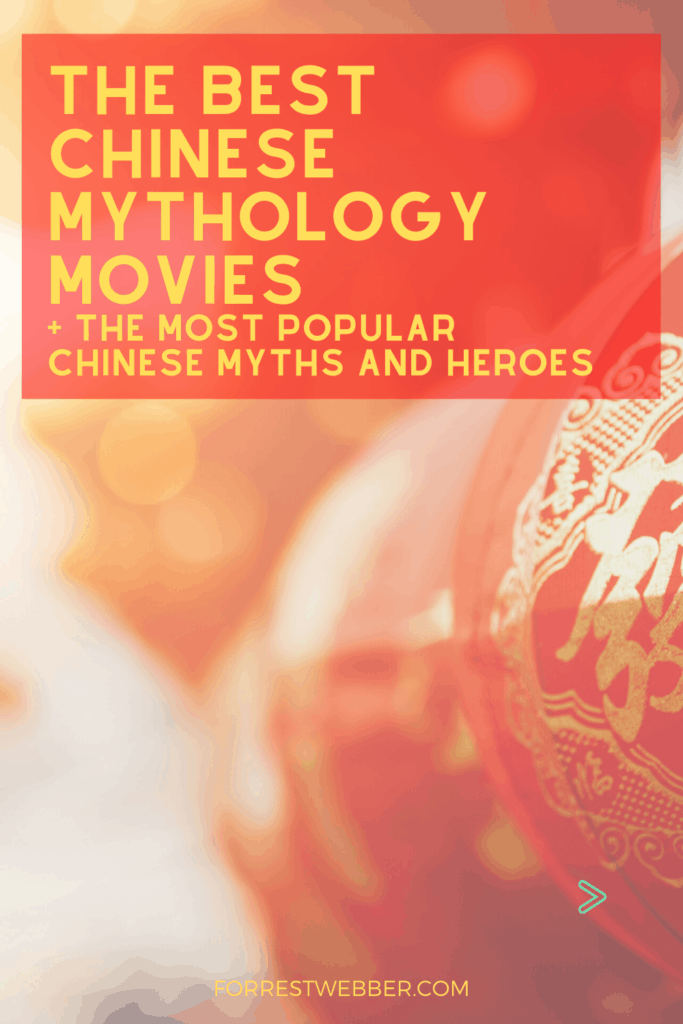
The Best Movies Based on Popular Chinese Myths
These are some of the most popular Chinese myths that have been turned into the movies that many enjoy today.
1. The Monkey King (2014)
This is the first of three movies in a trilogy series that portrays Sun Wukong as the main character. In the movie, Sun Wukong, the Monkey King, rebels against the Jade Emperor of Heaven.
Before he was named Sun Wukong, the monkey was created by a crystal that fell from Nüwa, the mother goddess. The crystal fell to the earth and landed on Mount Huaguo. Life began to form in the crystal and took the shape of a monkey. Over time, the monkey grew up and became lively, mischievous, and funloving.
The monkey is then discovered by a man named Subhuti who had been instructed by Guan Yin to train the monkey. The monkey agrees to go with Subhuti to be trained where Subhuti subsequently names the monkey Sun Wukong. Sun Wukong learns how to shape-shift both himself and others during his training. Once his training is complete, Sun Wukong returns to Mount Huaguo.
The remainder of the movie portrays Sun Wukong battling the Jade Emperor in Heaven and assessing the damage that has been done. Sun Wukong feels that he must help rebuild Heaven, but Buddha enters and tells Sun Wukong that he must sleep in the mountain, also Buddha’s hand, for 500 years. The film ends showing 500 years have passed, which sets up a sequel to be released just two years later.
2. The Monkey King 2 (2016)
The sequel to The Monkey King (2014) begins 500 years after Sun Wukong has battled the Jade Emperor in Heaven. The movie depicts a young Buddhist monk named Tang Sanzang, who is on a journey to collect Buddha’s scriptures. On his journey, Tang Sanzang frees Sun Wukong, who then becomes indebted to protecting the monk.
The movie depicts the Monkey King, Sun Wukong, protecting the monk and leading him across the land to find the sacred scriptures of Buddha.
3. The Monkey King 3 (2018)
Finishing out this trilogy is The Monkey King 3 that begins as the Buddhist monk, Tang Sanzang, and his disciples mistakingly enter the Womanland of Western Liang. The Womanland of Western Liang is a nation that is inhabited by women who are raised to believe that men are deceitful and evil in relation to love
While in the nation, Tang Sanzang and the queen fall in love. As Tang Sanzang and his disciples attempt to leave the nation, they are surrounded by a magical net that will not allow them to leave. The only way to leave the nation through the net is through love, but this means Tang Sanzang will have to give up his quest to stay with the queen and escape the land.
4. Journey to the West: Conquering the Demons (2013)
The Chinese myth of the Monkey King is one of the most popular, so it is no surprise that there is another movie that depicts this ancient Chinese myth. What makes this movie different than The Monkey King is that Journey to the West: Conquering the Demons combines the plots from both The Monkey King and The Monkey King 2.
The time is 110 minutes, so they have substantially condensed the details of the myth in order to fit so much material into one movie rather than breaking it up into two movies the way The Monkey King and The Monkey King 2 did.
5. Journey to the West: The Demons Strike Back (2017)
The movie picks up where Tang Sanzang and his disciples are on their quest for Tang Sanzang to tame the demons and fulfill his Buddhist roles. During the quest, Tang Sanzang learns personal struggles and has to learn to live with his many personal failures. Tang Sanzang and his disciples have to battle a house of spider women and other obstacles that also double as lessons to Tang Sanzang and his disciples.
Journey to the West: The Demons Strike Back focuses on Tang Sanzang and his disciples attempting to battle and tame demons while on his quest to fulfill his Buddhist calling.
Other Popular Chinese Myths
While the Monkey King is one of the most popular stories in Chinese mythology, there are other stories that are commonly told throughout generations. These stories are often told to children or displayed as children’s books.
The Moon Rabbit
Chinese mythology often includes many of the animals of the Chinese zodiac. The Monkey King and The Moon Rabbit are examples of how Chinese mythology includes the animals of the Chinese zodiac.
In The Moon Rabbit myth, the moon rabbit is a mythical creature who lives on the moon. Ancient Chinese myths believe the dark surfaces of the moon in the shape of a rabbit or hare are, in fact, the moon rabbit of the moon.
The moon rabbit has a mortar and pestle in his hands where he is creating an ancient dish, though the dishes vary between regions of the myth. Some myths believe that the moon rabbit is creating rice cakes, while other myths believe the moon rabbit is making medicine.
The Legend of the White Snake
This legend is also known as Madame White Snake and tells the story of a boy, Xu Xian, who ingests a substance that almost immediately nauseates him. He vomits the medicine into a lake where a white female snake appears and ingests the pills that the boy vomits. The madame snake wants to gain spiritual powers that the pills possess because a nearby turtle is jealous of her luck. As the pills are immortality pills, the madame snake becomes immortal and is eternally grateful to the boy for expelling the pills into the lake.
The madame snake travels the human realm and discovers a green snake who is enslaved to a beggar. The madame snake feels sorrow for the green snake and transforms into a human to save the green snake.
The green snake is now indebted to the white snake and feels that he should follow the white snake forever. While as a human, the white snake adopts the name Bai Suzhen and coincidentally meets Xu Xian and marries him. The green snake has adopted the name Xiao Qing.
After their marriage, Xu Xian and Bai Suzhen open a medicine shop. The turtle has discovered how to change shapes the way the madame snake has, so he turns into a Buddhist monk named Fa Hai. Fa Hai approaches Xu Xian and convinces him that his wife must drink a special wine during the festival in which they are participating.
Xu Xian offers the wine to his wife, where the wine makes her expel the harmful creature that she possessed which is the white snake. Xu Xian was heartbroken and shocked that his wife was a serpent so he immediately died of a heart attack.
The madame white snake and green snake have now begun to travel to Mount Emei to find the cure to revive her husband. She is able to revive her husband, and now Fa Hai has to come up with a new plan to defeat the lucky Bai Suzhen.
Fai Hai decides to imprison Xu Xian so that Bai Suzhen will attempt to rescue him once more. This time, Bai Suzhen is pregnant and she is unable to rescue her husband. Xu Xian is able to escape the imprisonment and reunites with Bai Suzhen in time for him to witness his son, Xu Mengjiao, be born.
After he is born, Bai Suzhen is captured by Fa Hai and imprisoned in the Leifeng Pagoda, which is a tall tower in China. As time continues, Xu Mengjiao tests for imperial examinations and passes. The examination is difficult, but Xu Mengjiao earns the title of the top scholar.
As he returns to Hanzhou to pay tribute to his mother at the Leifeng Pagoda, the heavens are touched by his devotion to his mother and decide to free Bai Suzhen from imprisonment. The family is finally reunited.
Conclusion
Chinese mythology has been told for centuries and dates back to approximately 220 AD. The stories have been created into books and movies that are told and shown today. These are a few of the best Chinese mythology movies that portray Chinese mythology, heroes, and short stories.


